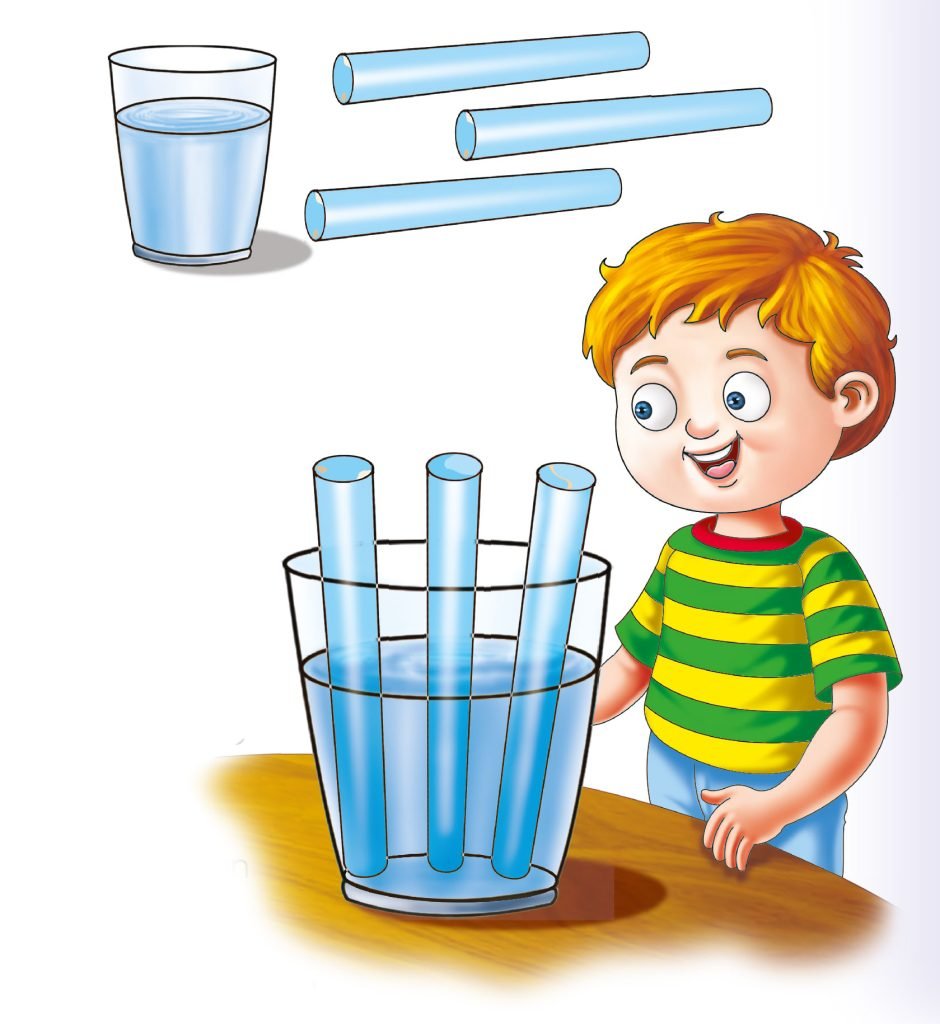
Materials Required:
- Glass of water
- 3 test tubes
- Grease
Procedure:
- Take three test tubes and put them in a glass and half fill up with water. Now observe the water level carefully. It is highest at the sides and gets gradually concave in the middle! This curved level of water is called meniscus and the reason of its such formation is the force
of attraction exerted by the walls of the test tubes or the glass on some portion of water due to adhesion. - Normally, you can reckon this adhesion to be a force which raises the level of water on the sides of the test tubes. Actually, this action of raising the water level higher is called the capillary action. This capillary effect is strongest on the test tube with the least diameter because in this condition, a large portion of the water remains in direct contact with the sides of the test tube. Owing to the adhesive force, it remains in the fold of the attraction working on it.
This is what happens:
Now, see what happens if you apply grease inside the test tubes before filling them up with water. This time the level of water instead of curving downwards would seem to be curving upwards. Why? It is so because the molecules of water do not get attracted so much by grease as by the plastic or glass. In this case, the mutual attraction of water by the grease, is known as cohesion and not adhesion.

